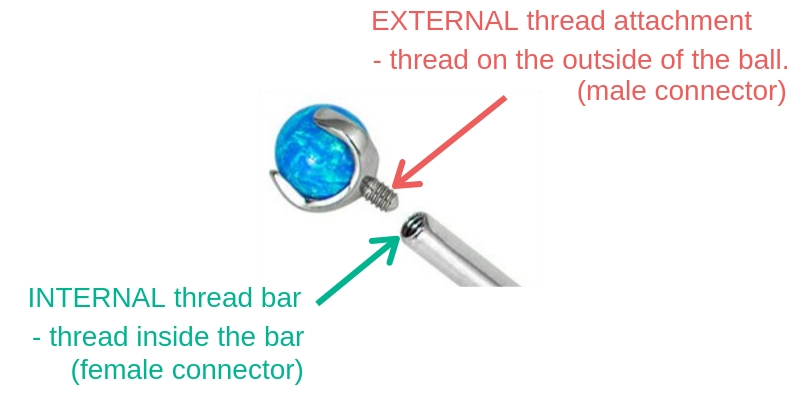It’s pretty straight forward really! Internally threaded body jewellery has a thread (the part with the screw grooves) inside the barbell, labret, dermal anchor, CBB, curved bar etc. (sometimes referred to as the female connector)

You then need an attachment for your internal thread product, a ball, jewel etc. The attachment needs to have an external thread. (sometimes referred to as the male connector).
Like standard thread piercing jewellery, internally threaded jewellery comes in different gauges (bar thickness). The most popular gauges are 1.2mm and 1.6mm thick.
So if you’re looking for a new attachment for your 1.2mm internal thread bar, labret etc you will need to choose “Attachments – For 1.2mm Internally Threaded shafts (0.9mm) products“.

If you’re looking for a new attachment for your 1.6mm internal thread bar, labret etc you will need to choose “Attachments – For 1.6mm Internally Threaded shafts (1.2mm) inc. Dermal Anchors products“.

If you already have an internal thread product and you’re looking to change the attachment it’s important to choose the correct gauge attachment! If you’re unsure, ask us, we’re always happy to help!
n.b. only products specifically described as being ‘internally threaded’ have the internal thread. I mention this as most body jewellery is not internal thread jewellery! (standard body jewellery is exactly the opposite with the bar having the thread on the outside – at the end of the bar).
